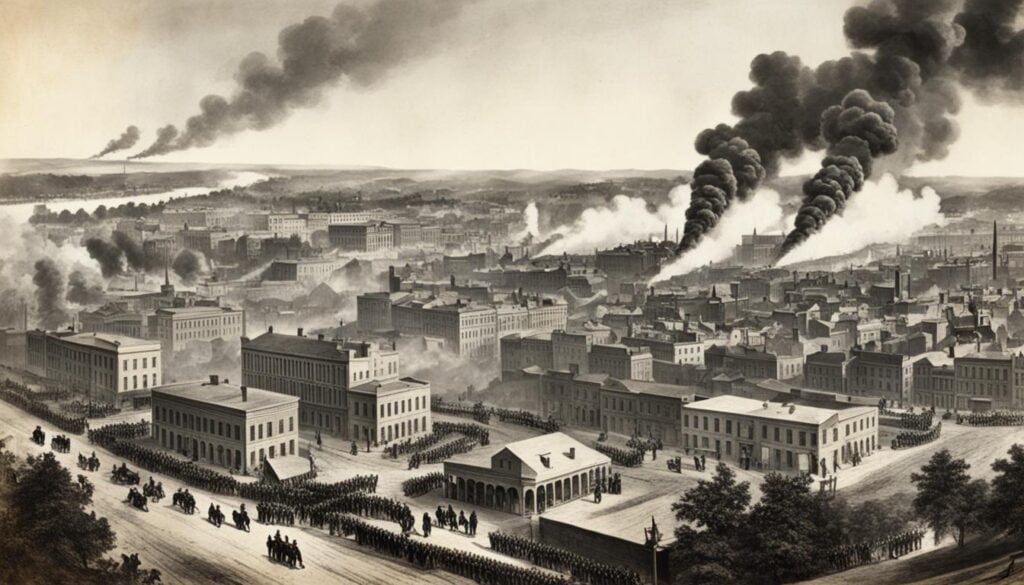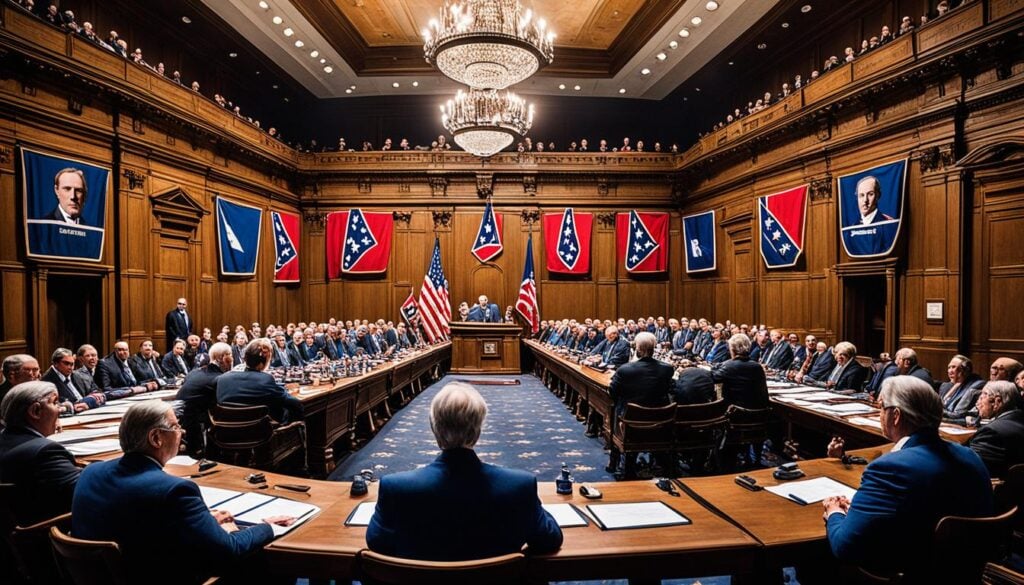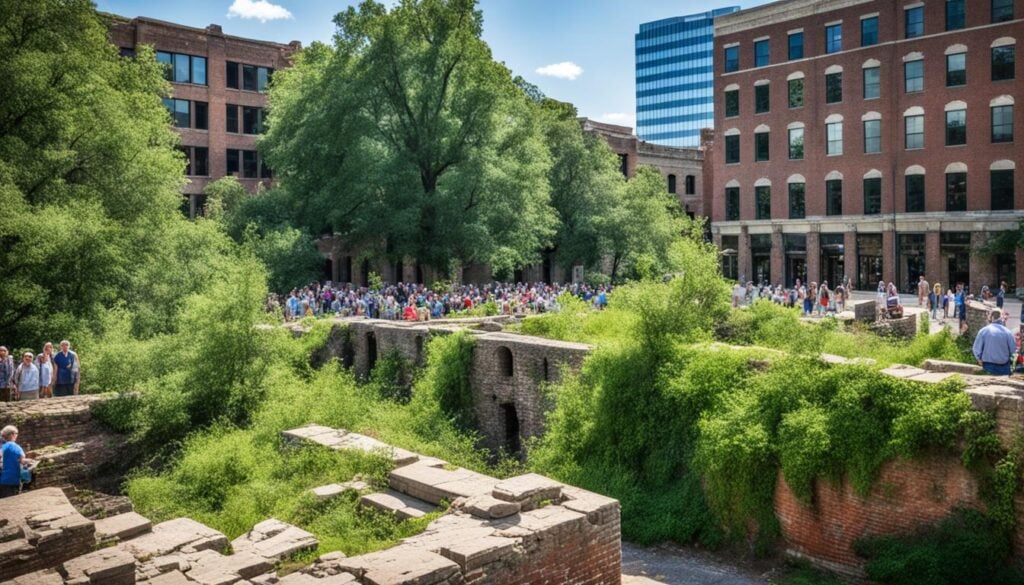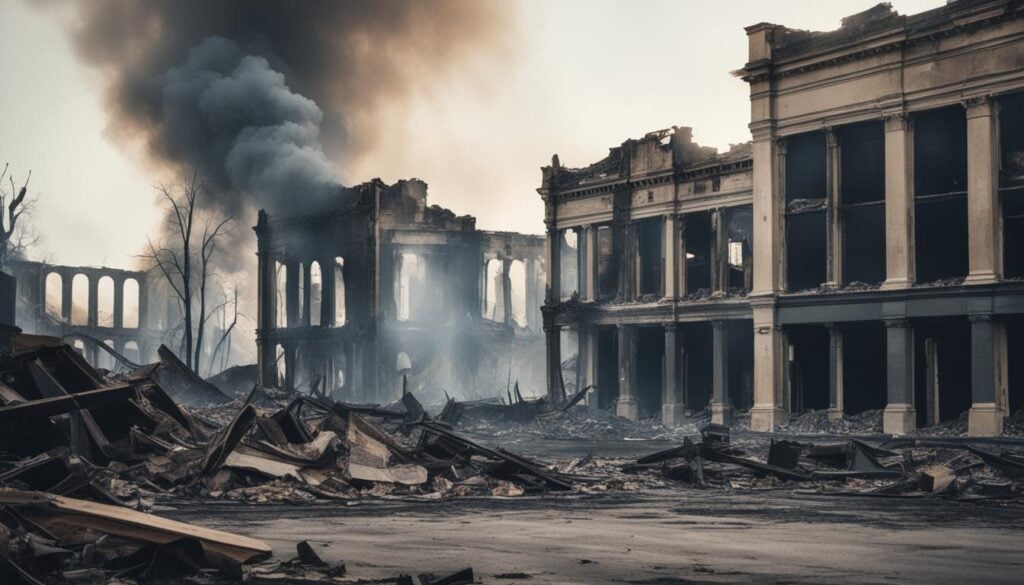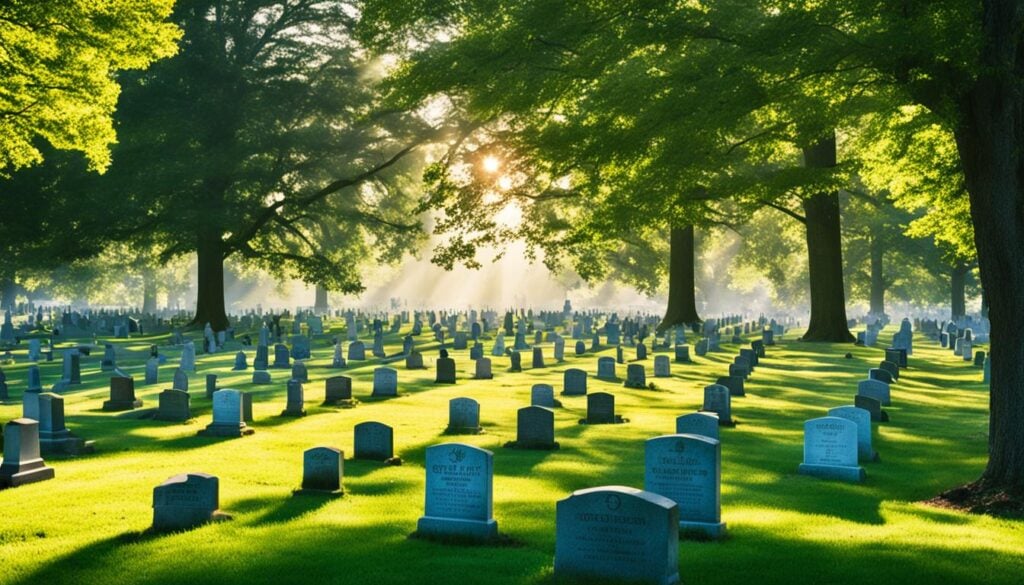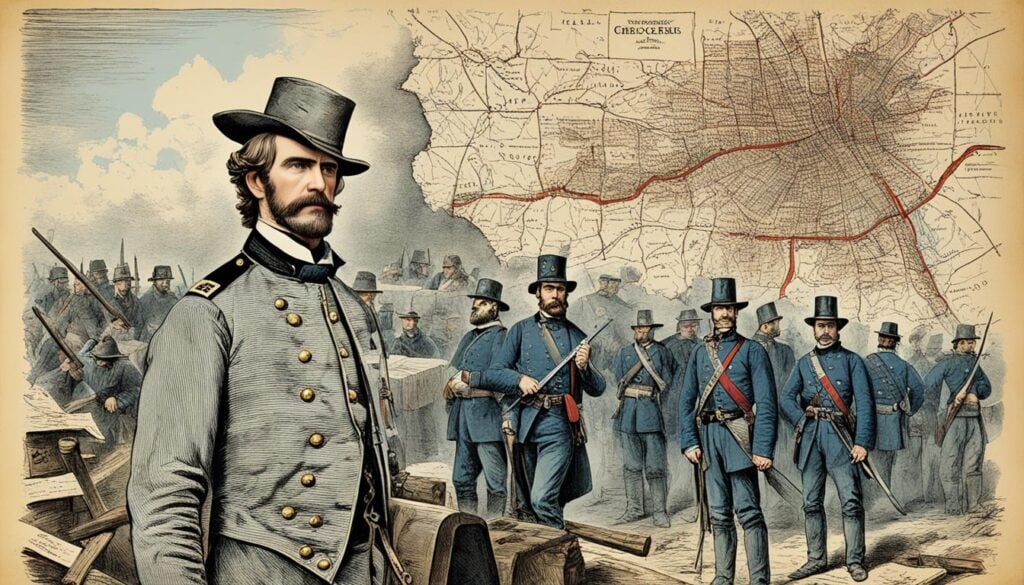Columbia, South Carolina played a crucial role in the American Civil War. This city shaped the course of the nation-defining conflict. Its story encompasses key events and influential figures that left a lasting mark on history.
The city witnessed the state’s Secession Convention, Confederate siege, and Union occupation. Columbia’s burning and subsequent Reconstruction-era challenges are significant parts of its Civil War legacy.
Explore Columbia’s historic sites to uncover tales of bravery and sacrifice. Learn about the wartime experiences that defined this remarkable city. Discover how Columbia’s past continues to influence its present and future.
Introduction to Columbia’s Pivotal Role in the Civil War
Columbia, South Carolina’s capital, was crucial in the American Civil War. It was a vital Confederate hub along the Congaree River. Let’s explore Columbia’s wartime history and the people who shaped it.
Overview of Columbia’s Strategic Importance
Columbia was strategically vital for Confederate forces. Its river location made it a key transportation center. The city’s industrial sector supported the Confederate war effort.
Textile mills and other factories provided essential resources. Columbia’s position allowed for efficient movement of troops and supplies.
Key Figures and Events that Shaped the City’s Fate
Several events and people defined Columbia’s Civil War history. The Secession Convention led to South Carolina leaving the Union. Wade Hampton, a Confederate hero, arrived in the city.
The Union occupation resulted in Columbia’s devastating burning. These pivotal moments changed the city’s fate forever.
“The history of Columbia during the Civil War was defined by the actions of several influential individuals and momentous events.”
Robert N. Gourdin played a significant role in Columbia’s wartime experiences. Other key figures also left their mark on the city’s Civil War history.
The South Carolina Secession Convention
In December 1860, South Carolina made history. It became the first state to leave the Union. This crucial event shaped the American Civil War. The South Carolina Secession Convention took place in Columbia.
Delegates from across the state attended this landmark gathering. They voted to separate from the United States. Their decision was driven by a desire to protect slavery and state rights.
The convention’s impact was far-reaching. It reflected the growing tensions between North and South. The South Carolina Secession Convention was a complex and divisive event.
Historians still debate the convention’s legacy today. It played a crucial role in starting the Civil War. Its effects on the Reconstruction era were significant.
“The South Carolina Secession Convention was a defining moment in the lead-up to the Civil War, reflecting the deep-seated tensions that had been building for years between the North and South.”
Civil War history in Columbia, SC
Columbia, SC faced growing tensions before the Civil War began. The city struggled with the North-South divide. This set the stage for Columbia’s key role in the conflict.
Prelude to War: Tensions Mounting in Columbia
Columbia was at the heart of the brewing storm. Its location and importance made it a target for both sides. Residents felt uneasy as they saw tensions rise.
The city’s population was split on the issue. Some backed the Union, while others supported the Confederacy. This internal divide added to the overall sense of unrest.
Rumors spread, fueling anxiety among Columbia’s people. They prepared for a clash that would change their history forever.
| Factors Contributing to Tensions in Columbia | Impact on the City |
|---|---|
| Strategic Importance | Columbia’s location made it a valuable target for both Union and Confederate forces, leading to increased military presence and the heightening of tensions. |
| Divided Loyalties | The population of Columbia was split between supporters of the Union and the Confederacy, creating an atmosphere of unrest and conflict within the city. |
| Economic Significance | As a hub of industry and commerce, Columbia’s economic importance meant that its fate would have far-reaching consequences, further fueling the tensions. |
The city prepared for a battle that would shape its future. Columbia, SC faced a Civil War struggle that would leave a lasting mark.
The Confederate Siege of Columbia
Columbia became a prime target for Union forces during the Civil War. The Confederate Army recognized the city’s strategic importance. They worked to fortify Columbia and devise strategies to defend against the impending assault.
Military Strategies and Fortifications
Confederate commanders in Columbia understood the need for robust defenses. They implemented strategic fortifications and military tactics. These efforts aimed to boost their chances of withstanding the Union siege.
Their defensive measures included:
- Constructing a network of earthworks, trenches, and artillery batteries around the city’s perimeter to create a formidable defense line.
- Deploying sharpshooters and snipers in strategic locations to provide cover and pick off advancing Union troops.
These fortifications were vital in the Confederate siege of Columbia. The city’s defenders aimed to repel the Union attack. They sought to maintain control of this key strategic location.
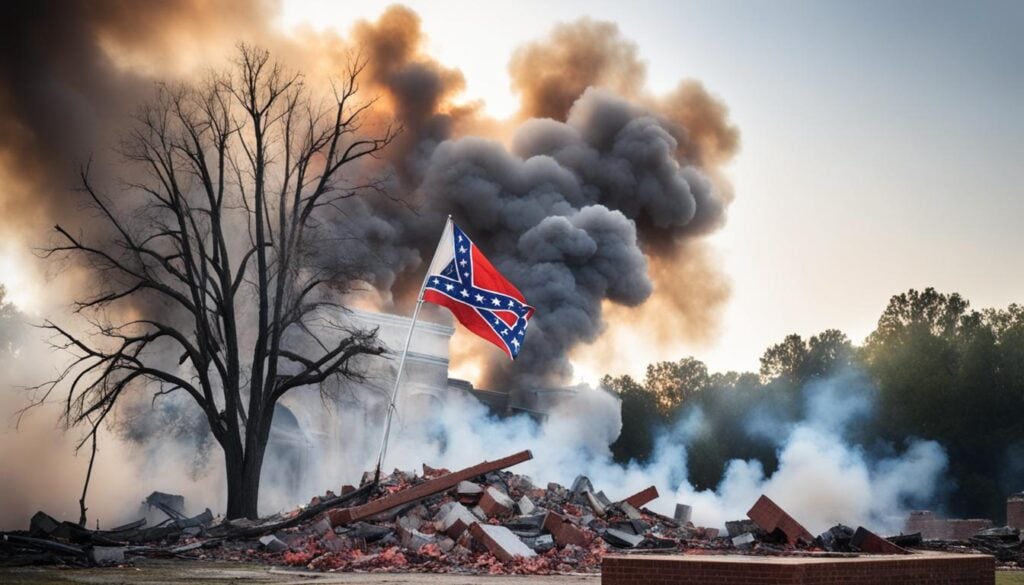
Union Occupation and the Burning of Columbia
In February 1865, Union occupation of Columbia became a key Civil War event. General William T. Sherman’s forces captured South Carolina’s capital. This left a lasting impact on the city and its people.
The Burning of Columbia followed the Union’s arrival. Fire engulfed the city, causing great distress to residents. The exact cause remains debated, with both sides accused.
The fire’s aftermath was devastating. Many buildings were destroyed, leaving Columbia in ruins. Residents faced huge emotional and economic challenges as they rebuilt their lives.
These events shaped Columbia’s physical landscape and collective identity. They hold a significant place in the city’s history.
Today, we continue to explore this legacy. It serves as a powerful reminder of Columbia’s resilience during the Civil War. The city’s residents showed great strength in the face of adversity.
Wade Hampton: Confederate Hero and Columbia Defender
Wade Hampton was a key Confederate general who protected Columbia, South Carolina’s capital, during the Civil War. His loyalty and smart leadership made him a hero in state history.
Hampton’s Legacy in South Carolina
Wade Hampton came from a well-known South Carolina family. He was a skilled military leader and strong supporter of the Confederacy. During the war, he led troops in many battles.
Hampton’s biggest impact on Columbia came at the war’s end. He helped evacuate Confederate troops and civilians as Union forces neared. His quick actions reduced the damage to Columbia.
After the war, Hampton stayed important in South Carolina politics. He served as governor and U.S. senator. South Carolina still honors him as a Confederate hero today.
| Key Events in Wade Hampton’s Life | Year |
|---|---|
| Born in Columbia, South Carolina | 1818 |
| Served as a Confederate general during the Civil War | 1861-1865 |
| Elected as the 77th Governor of South Carolina | 1876 |
| Elected as a United States Senator from South Carolina | 1879-1891 |
| Died in Columbia, South Carolina | 1902 |
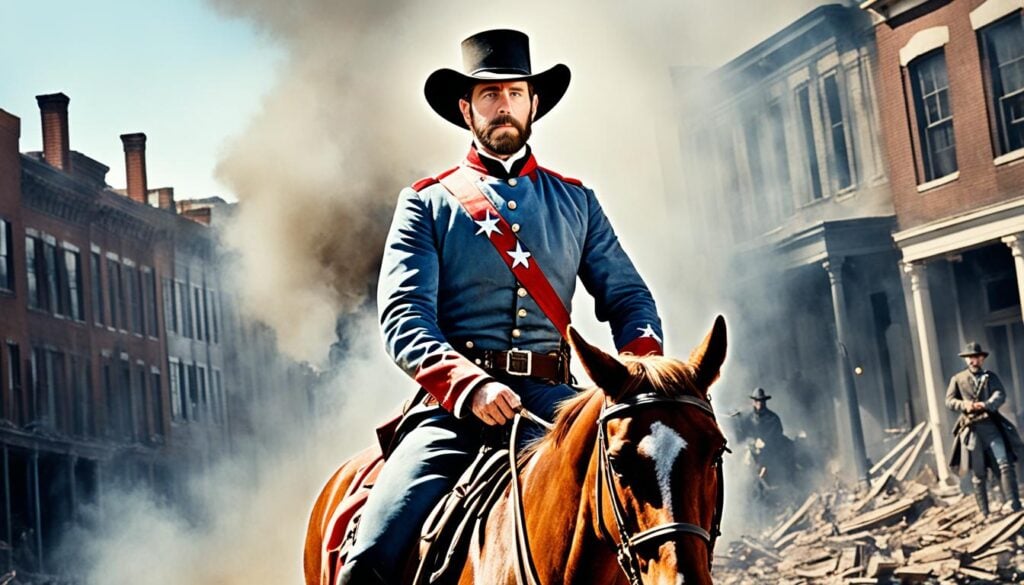
Wade Hampton’s legacy as a Confederate hero lives on long after his death. His dedication and leadership during the Civil War left a lasting mark. He continues to inspire South Carolina residents who honor his memory.
Reconstruction Era: Rebuilding Columbia
Columbia faced huge challenges after the Civil War. The city had to rebuild its economy and infrastructure. It also had to deal with a new society without slavery.
Economic and Social Challenges
Columbia’s economy was in ruins after the war. The city relied on farming and plantations before, but now needed new ways to grow.
People had to fix the city and bring back essential services. They also had to find new jobs and industries to support themselves.
Columbia struggled to include former slaves in the community. Tensions rose as freedmen and ex-Confederates fought for power in local government.
| Economic Challenges | Social Challenges |
|---|---|
|
|
Columbia’s people showed great strength during this time. They worked together to rebuild their city. Their efforts laid the groundwork for Columbia’s future success.
Elmwood Cemetery: Final Resting Place for Civil War Veterans
Elmwood Cemetery in Columbia, South Carolina, honors American Civil War veterans. This historic burial ground preserves the legacies of Union and Confederate soldiers. It’s a poignant reminder of Columbia’s role in the conflict.
Elmwood’s tree-lined paths exude reverence and solemnity. Weathered gravestones tell stories of Civil War veterans buried here. Each stone represents a life and sacrifice made during the war.
General Wade Hampton, a notable Confederate officer, rests in Elmwood Cemetery. He played a key role defending Columbia during the Union occupation. His grave symbolizes the bravery of those who protected their homeland.
“Elmwood Cemetery is a hallowed ground, where the echoes of the Civil War still linger, reminding us of the high price paid for the freedom we now enjoy.”
Elmwood features monuments dedicated to fallen Civil War soldiers. These tributes remind us of sacrifices made to shape our nation’s history. They stand as solemn memorials to those who fought.
Explore Elmwood Cemetery and reflect on the stories etched in stone. Pay respects to those who served their convictions. This sacred ground honors the spirit of brave men and women.
Elmwood reminds us of sacrifices made for our freedoms. It stands as a lasting tribute to those who fought for their beliefs.
Robert N. Gourdin: A Pivotal Figure in Columbia’s History
Robert N. Gourdin shaped Columbia’s Civil War experiences as a prominent Columbian and Confederate officer. His actions and decisions left a lasting impact on the community during this tumultuous period.
Born in 1817, Gourdin was a successful businessman and influential member of Columbia’s elite class. He answered the call to arms when the Civil War broke out. Gourdin used his military experience and strategic expertise to defend the Confederacy.
Gourdin played a crucial role in Columbia’s defense during the Confederate siege. He led troops and coordinated military strategies to protect the capital. His leadership was key in delaying the Union’s advance and ensuring the city’s survival.
Even after the Union occupation and Columbia’s burning, Gourdin remained prominent in the community. He continued advocating for the Confederate cause and aided in reconstruction efforts. Gourdin’s legacy as a soldier and community advocate cemented his place in Columbia’s history.
Today, Robert N. Gourdin is remembered as a pivotal figure in his home city. His contributions to Columbia’s defense and commitment to the Confederacy made him legendary.
“Gourdin’s unwavering loyalty and dedication to the Southern cause made him a respected figure among his peers and a formidable foe for the Union forces.”
| Timeline of Robert N. Gourdin’s Involvement in the Civil War |
|---|
| 1861: Gourdin joins the Confederate Army and is commissioned as an officer. |
| 1862-1864: Gourdin plays a crucial role in the defense of Columbia, leading troops and coordinating military strategies. |
| 1865: After the burning of Columbia, Gourdin remains a prominent figure in the city, advocating for the Confederate cause and aiding in reconstruction efforts. |
| Post-War: Gourdin’s legacy as a dedicated soldier and influential leader continues to be celebrated in Columbia’s history. |
Maxcy Gregg: Confederate Officer and Renowned Tactician
Maxcy Gregg was a notable Confederate officer from Columbia, South Carolina. He was known for his tactical expertise and strong leadership. Gregg’s military career lasted throughout the Civil War.
Gregg’s Impact on the War Effort
Maxcy Gregg played a key role in the Confederate war effort. As a colonel, he oversaw Columbia’s defenses. He managed troop movements and built defensive structures.
Gregg’s tactical skills shone during the siege of Columbia. He led his troops with distinction. His ability to predict enemy moves impressed both allies and foes.
“Maxcy Gregg was a true master of the art of war, whose leadership and strategic brilliance were pivotal in the Confederate’s efforts to defend Columbia during the Civil War.”
Even after Columbia’s occupation and burning, Gregg remained loyal. He continued to serve bravely. His military skills earned him more praise.
Gregg’s impact went beyond tactics. He boosted troop morale and discipline. His dedication inspired his men during the defense of Columbia.
Maxcy Gregg’s legacy lives on in Columbia’s Civil War history. He represents the bravery of those who fought for their homeland.
Conclusion
Columbia’s Civil War history shows the city’s strength and determination. From the Secession Convention to reconstruction, Columbia played a crucial role in the American Civil War. The city’s story reveals its people’s resilience in the face of adversity.
Key figures like Wade Hampton and Maxcy Gregg greatly influenced Columbia’s history. Their actions highlight the complex dynamics of the era. These individuals left lasting legacies that continue to shape the city today.
The Reconstruction period brought significant societal and economic challenges to Columbia. These difficulties provide insights into the war’s long-term effects on the city and its residents. Columbia’s ability to overcome these obstacles demonstrates its enduring spirit.
Columbia’s Civil War history offers valuable lessons for the present and future. It reminds us of the sacrifices made and triumphs achieved. This rich history continues to shape Columbia’s identity and relevance in modern times.


































